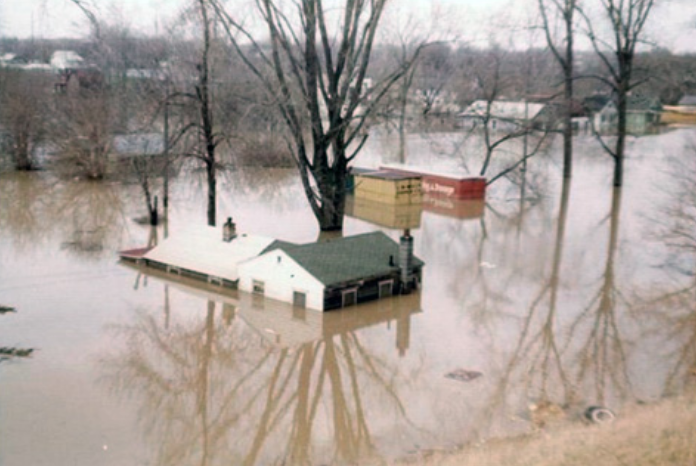Flooding
Floods are one of the most common hazards in the United States and may occur during any month of the year in Michigan. A flood is defined when water overflows onto land that is normally dry. Not all floods are alike; they happen on different scales of space and time. The main types of floods are:

Source: NOAA
Flash floods can occur within a few minutes or hours of heavy rainfall or from a dam or levee failure. These floods can destroy structures, down trees, roll boulders, and create new waterways.
Floods can be magnified in urban areas. As land is converted from fields and woodlands to roads and parking lots, it loses its ability to absorb rainfall. During periods of urban flooding, streets can become swift moving rivers.
Flat areas near rivers, streams, lakes, and reservoirs are vulnerable to river floods. Some river floods occur when winter or spring rains fill river basins with too much water too quickly. Other floods can happen when storm systems move slowly or from heavy rains from hurricanes or tropical systems.
Area floods are long-lived and do not usually threaten life. Standing water in flat areas, such as an open field, is just one example of an area flood. Area floods can cause damage to crops and cause livestock to become displaced. Also, the standing water from this type of flooding can serve as a breeding ground for insects and diseases.
Did You Know?
Some of the most significant flooding events in Michigan have occurred in late winter or early spring, when sudden warming and rain may be combined with snowmelt. You can learn more about some of these events through NOAA’s Flood Safety page for Michigan